 |
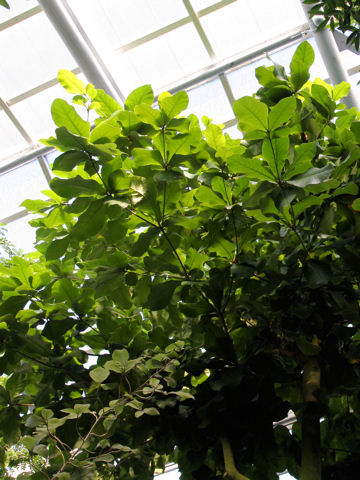

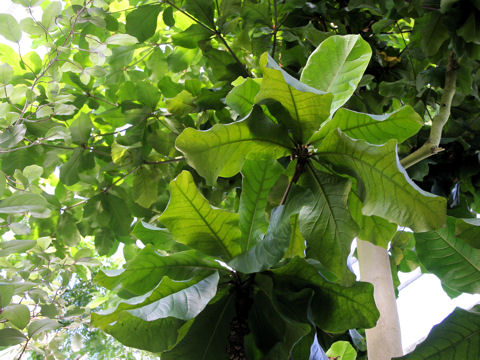

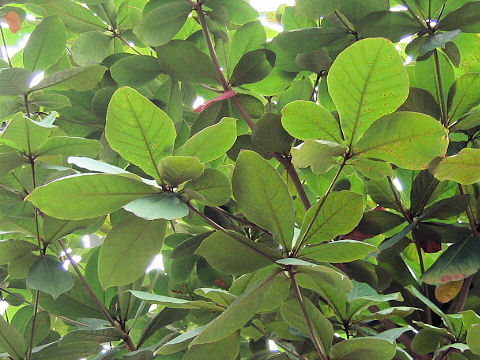

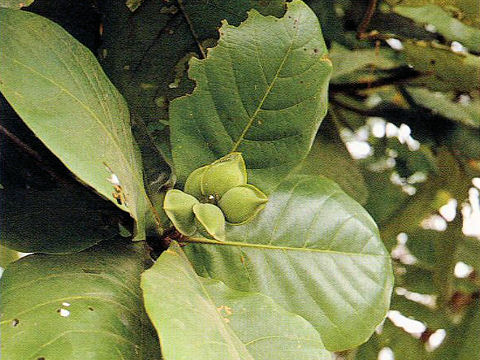

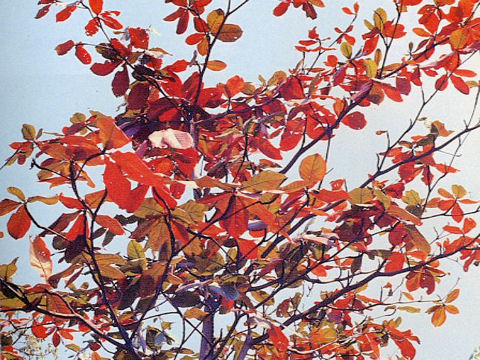





|

|
íªÌì¼ìƬ}´A»êÉìAWAâ|lVAɪzµÄ¢Ü·BCÝÌßɶ¦A³ÍPT`QO[gÙÇÉÈèÜ·B²Í¼§µAÂ̤}ªÖ¶óɽià¢ÄAÜdÌæ¤È÷¥ð`¬µÜ·BtÍ|`ÅA·³ªQT`ROZ`à èA}æÉWµÄݶµÜ·BܽNQñÌtOÉÍAÔgtµÜ·BtÆHÉAtãü©çäóÔð¾µA¢Ôð¢ÁϢ穹ܷBÔÙÌæ¤É©¦éÌÍäÓÐÅ·BÊÀÍuààvÌíqÉÄ¢ÄAÉ éíqÍHpÉÈèA|tFm[ª½ÜÜêétÍNƵÄp³êÜ·Ba¼Ìu½ÜÈvÆÍA¬}´Ìû¾ÅIgM\EÈÌuÄèÍÚv̱ÆBʼÅu±ÎÄ¢µiÍtè÷jvÆàÄÎêÜ·BäpØêÅÍuSmvAêÅÍuSm÷ilan ren shujvÅ·B
|

|
VNVÈ^}i®ÌtØÅAw¼Í Terminalia catappaBp¼Í Sea almondAIndian almondB
|

|
The Sea almond (Terminalia catappa) belongs to the family Combretaceae. It is a tall deciduous tree that is distributed to the southern Ryukyu Islands and the Ogasawara Islands in Japan, as well as Southeastern Asia and Polynesia. This tree grows near seashore and can reach 15-20 m in height. The trunk is erect and the lateral branches are arranged annular and several tiers. The tree crown looks like a pagoda (tiered tower). The leaves are obovate, 25-30 cm long and alternate intensively at end of twigs. They turn red before defoliation twice a year. The white flowers bloom in the axile flowering spikes in spring and fall. The flower is non-petaled though the white calyx lobes. The fruits resemble to peach stones. The seeds are edible, the leaves contain rich polyphenol and are used for a healthy tea. In Taiwanese Chinese, it is called "Sm" and "Sm÷" (lan ren shu) in Chinese.
|

|
[ãEP] Qn§èsuèsõ¿A¨vÉÄA2008N1207úBeB
[Q] ss¶æus{§A¨vÉÄA2005N0215úBeB
[RES] ÖÎu¾zÌÔ½¿væèB(photo by Midori Seki)
[TEº] xRsw¬uxR§A¨vÉÄA2025N0321úBeB
|








